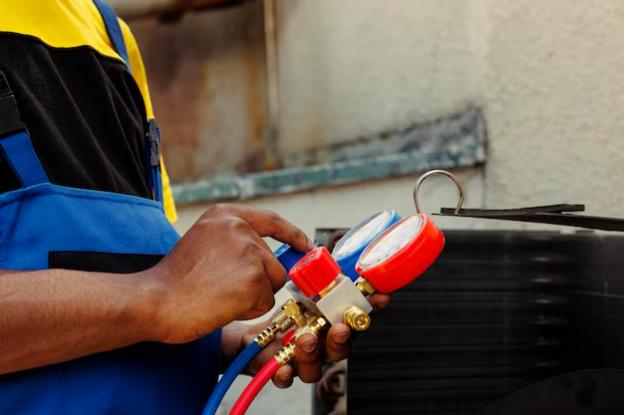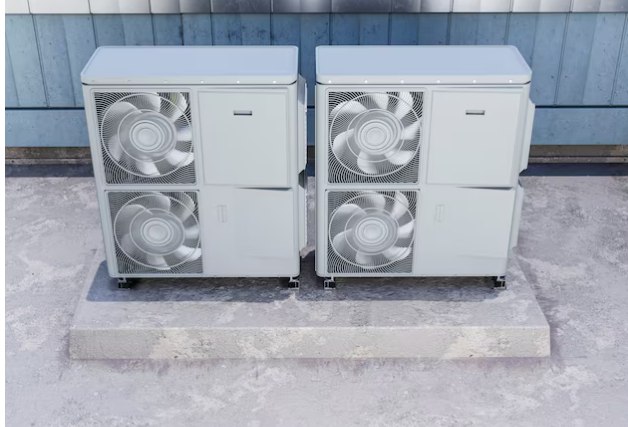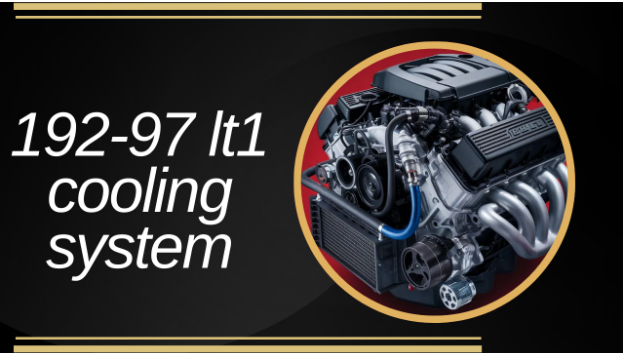The 192-97 LT1 Cooling System: An In-Depth Guide
The 192-97 LT1 cooling system, developed by General Motors for its 1990s Chevrolet Corvette and Camaro models, is celebrated for its innovative design and reliability. Essential for maintaining optimal engine temperatures, the cooling system plays a pivotal role in the overall performance and longevity of the LT1 engine. This article explores the details of the 192-97 LT1 cooling system, including its unique features, components, common issues, and essential maintenance tips to keep your engine running smoothly.

Overview of the LT1 Engine
The LT1 engine is a 5.7-liter small-block V8 introduced in 1992. Known for its advanced engineering, it incorporates features such as an aluminum intake manifold and a reverse-flow cooling system. Unlike traditional setups, the reverse-flow design prioritizes cooling the cylinder heads before the engine block, ensuring better temperature control. This innovation improves engine performance and durability, making the 192-97 LT1 cooling system a standout in automotive technology.
Components of the 192-97 LT1 Cooling System
The 192-97 LT1 cooling system comprises several critical components, each designed to ensure consistent temperature regulation and peak engine performance. Here’s a closer look at these essential parts:
Radiator
The radiator is the heart of the cooling system, responsible for dissipating heat from the engine coolant. With a series of tubes and fins, the radiator maximizes heat exchange efficiency. Specifically tailored to meet the high demands of the LT1 engine, the radiator in the 192-97 LT1 cooling system ensures effective heat dissipation even under strenuous conditions.
Water Pump
A vital component, the water pump circulates coolant through the engine and the 192-97 LT1 cooling system. Driven by the engine’s serpentine belt, the water pump ensures consistent coolant flow, preventing hotspots and maintaining temperature stability.
Thermostat
The thermostat in the 192-97 LT1 cooling system plays a crucial role in regulating coolant flow based on engine temperature. By opening and closing at specified thresholds, it allows coolant to flow to the radiator when the engine reaches its operating temperature, ensuring it doesn’t overheat or run too cold.
Hoses
A network of durable hoses transports coolant between the system’s components. These hoses must remain in good condition to avoid leaks and ensure proper circulation. Regular inspections are essential, as aging hoses can degrade and compromise the 192-97 LT1 cooling system.
Coolant Reservoir
The coolant reservoir stores excess coolant, accommodates thermal expansion, and provides an easy way to monitor coolant levels. Its design in the 192-97 LT1 cooling system simplifies maintenance while supporting efficient operation.
Common Issues in the 192-97 LT1 Cooling System
While the 192-97 LT1 cooling system is highly reliable, a few common problems can arise over time:
- Leaking Hoses: Cracks or wear in the hoses can lead to coolant leaks, reducing efficiency.
- Faulty Water Pump: A failing water pump can disrupt coolant circulation, causing engine overheating.
- Clogged Radiator: Dirt or debris buildup can restrict coolant flow, reducing heat dissipation.
- Thermostat Malfunction: A stuck thermostat can prevent proper temperature regulation, risking engine damage.
Regular inspections and timely repairs can prevent these issues from escalating.
Maintenance Tips for the 192-97 LT1 Cooling System
Proper maintenance of the 192-97 LT1 cooling system ensures its longevity and optimal performance. Follow these tips to keep your system in top condition:
- Inspect Components Regularly: Check hoses, the water pump, and the radiator for signs of wear or damage.
- Flush Coolant System: Periodically flush the coolant system to remove debris and contaminants that may hinder performance.
- Monitor Coolant Levels: Regularly check the coolant reservoir and refill it as needed to prevent overheating.
- Replace Worn Parts: Replace any damaged or aged components promptly to avoid costly repairs later.
Why the 192-97 LT1 Cooling System Stands Out
The 192-97 LT1 cooling system represents a leap forward in engine cooling technology. By prioritizing cylinder head cooling and incorporating durable components, it offers superior temperature management, enhanced engine performance, and long-term reliability. Whether you’re a Corvette or Camaro enthusiast or simply looking to maintain your vehicle’s engine, understanding and caring for the 192-97 LT1 cooling system is essential.
The Functionality of the 192-97 LT1 Cooling System
The 192-97 LT1 cooling system is engineered to maintain the engine at its ideal operating temperature, ensuring peak performance and longevity. Engines generate significant heat during operation, and the cooling system’s primary role is to absorb and dissipate this heat efficiently. This process not only prevents overheating but also allows the engine to run optimally under varying conditions.
How the 192-97 LT1 Cooling System Works
When the engine reaches its operating temperature, the thermostat opens, allowing coolant to flow from the engine block into the radiator. Inside the radiator, the coolant travels through a network of tubes and fins, where air from the grille helps dissipate the heat. Once cooled, the coolant cycles back to the engine to absorb more heat, repeating the process continuously.
One standout feature of the 192-97 LT1 cooling system is its reverse-flow cooling design. Unlike traditional systems, it prioritizes cooling the cylinder heads before the engine block. This approach targets hotspots more effectively, reducing the risk of engine knock and enhancing performance. By efficiently managing heat, the 192-97 LT1 cooling system contributes to better fuel efficiency and engine reliability.
Common Issues with the 192-97 LT1 Cooling System
While the 192-97 LT1 cooling system is robust, certain issues can arise over time. Recognizing these problems early can help owners address them before they lead to costly repairs or engine damage.
Overheating
Overheating is one of the most common challenges faced by the 192-97 LT1 cooling system. This issue can result from various causes, including:
- A faulty thermostat
- A failing water pump
- A clogged radiator
Symptoms of overheating include an unusually high temperature gauge, steam emanating from the engine bay, and a noticeable drop in engine power. Promptly addressing the underlying cause is essential to prevent long-term damage.
Coolant Leaks
Coolant leaks can occur at various points in the 192-97 LT1 cooling system, such as the radiator, hoses, or water pump. These leaks lead to reduced coolant levels, compromising the system’s ability to regulate temperature. Regularly inspecting hoses and connections for wear or damage can help prevent leaks and maintain proper system function.
Clogged Radiator
Over time, debris and sediment can accumulate in the radiator, restricting coolant flow. A clogged radiator reduces cooling efficiency, making the engine prone to overheating. To prevent this issue, it’s important to flush the 192-97 LT1 cooling system at recommended intervals, ensuring that the radiator remains clear of obstructions.
Thermostat Malfunction
A malfunctioning thermostat can disrupt the cooling process. If the thermostat sticks closed, it prevents coolant from circulating to the radiator, causing overheating. Conversely, if it remains open, the engine may struggle to reach its optimal operating temperature, especially in colder conditions. Replacing a faulty thermostat is a simple yet crucial fix for maintaining the 192-97 LT1 cooling system.
Water Pump Failures
The water pump is vital for circulating coolant throughout the 192-97 LT1 cooling system. A failing pump can lead to insufficient coolant flow, resulting in overheating. Warning signs include unusual noises, leaks near the water pump, and fluctuating temperature readings. Addressing water pump issues promptly ensures the system continues to operate efficiently.
Maintaining the 192-97 LT1 Cooling System
Proper maintenance is key to the longevity and performance of the 192-97 LT1 cooling system. Here are some essential tips:
- Regular Inspections: Check hoses, the radiator, and the water pump for signs of wear or leaks.
- Coolant System Flushing: Flush the system periodically to remove debris and sediment that can clog the radiator.
- Monitor Coolant Levels: Keep an eye on the coolant reservoir and refill it as needed to avoid overheating.
- Replace Aging Components: Don’t hesitate to replace worn hoses, thermostats, or water pumps to ensure the system functions optimally.
Regular Coolant Changes
Coolant degrades over time, losing its ability to regulate temperature effectively. Regular coolant changes are a fundamental aspect of maintaining the 192-97 LT1 cooling system. Here’s what you need to know:
- Frequency: Change the coolant every two to three years or as specified in your vehicle’s manual.
- System Flushes: Periodically flush the system to remove contaminants, sediment, and debris that can clog the radiator and other components.
Inspect Hoses and Connections
The hoses and connections in the 192-97 LT1 cooling system are vital for seamless coolant flow. Inspect these components regularly for:
- Signs of Wear: Cracks, bulges, or brittleness indicate that hoses may need replacing.
- Leaks and Clamps: Check for leaks around connections and ensure clamps are secure. Replacing worn hoses and tightening loose clamps can prevent coolant leaks.
Monitor the Temperature Gauge
Keep a close watch on the temperature gauge while driving. This simple step can help identify potential problems in the 192-97 LT1 cooling system early.
- Fluctuations: Sudden changes in temperature readings can indicate issues like a failing thermostat or low coolant levels.
- Overheating Alerts: If the gauge shows a steady increase, it’s crucial to investigate the cause immediately.
Check the Radiator
The radiator is a critical component of the 192-97 LT1 cooling system. Regular inspection and cleaning ensure it operates at peak efficiency.
- Inspect for Damage: Look for leaks, corrosion, or damaged fins.
- Keep It Clean: Remove debris or dirt from the radiator fins to ensure effective airflow.
- Replacement: If the radiator shows significant wear or fails to cool the engine effectively, consider replacing it.
Test the Thermostat
A properly functioning thermostat is essential for the 192-97 LT1 cooling system to regulate engine temperature effectively. To test it:
- Remove the thermostat and place it in boiling water.
- Observe whether it opens at the correct temperature.
- Replace it if it doesn’t open properly or closes too slowly.
Importance of Cooling System Lines in LT1 Engines
The cooling system lines in the 192-97 LT1 cooling system are integral to maintaining proper engine temperatures. These lines transport coolant between
the engine and radiator, ensuring a continuous flow that prevents overheating and enhances performance.
Key Benefits of Cooling System Lines:
- Prevention of Overheating: Efficient coolant flow ensures the engine operates within its optimal temperature range, reducing the risk of overheating.
- Enhanced Performance: By maintaining consistent temperatures, the 192-97 LT1 cooling system supports improved engine efficiency and fuel economy.
- Protection Against Damage: Proper temperature regulation safeguards vital engine components from heat-related wear and tear, extending the engine’s lifespan.
Identifying Issues with 192-97 LT1 Cooling System Lines
Early detection of problems in the 192-97 LT1 cooling system lines is essential for preventing serious engine damage. By recognizing the following signs, drivers can address issues promptly and maintain the system’s efficiency.
Key Signs of Problems in the 192-97 LT1 Cooling System:
- Coolant Leaks:
- Visible puddles or stains under the vehicle can indicate leaking coolant.
- Leaks often result from worn or damaged lines or loose connections.
- Engine Overheating:
- A rising engine temperature gauge is a clear sign of inadequate coolant flow, potentially caused by blockages or leaks in the 192-97 LT1 cooling system.
- Unusual Engine Noises:
- Bubbling or gurgling sounds may indicate air trapped in the cooling system, suggesting the cooling lines need inspection or replacement.
Addressing these symptoms swiftly can protect the engine and prevent costly repairs.
Installation and Maintenance of 192-97 LT1 Cooling System Lines
Proper installation and maintenance of the 192-97 LT1 cooling system lines are critical for ensuring their durability and effectiveness. Following the correct steps during installation and adhering to regular maintenance practices can extend the system’s lifespan and performance.
Installation Steps for 192-97 LT1 Cooling System Lines:
- Prepare the Engine:
- Allow the engine to cool completely before starting.
- Drain the coolant from the system to prevent spillage.
- Remove Old Cooling Lines:
- Carefully disconnect the old lines, noting their placement to guide the new installation.
- Install New Cooling Lines:
- Fit the new 192-97 LT1 cooling system lines securely in place.
- Use high-quality clamps to ensure a snug and leak-free fit.
Maintenance Tips:
- Inspect Regularly: Check the cooling lines for cracks, wear, or areas of potential damage, particularly in regions exposed to high heat or vibrations.
- Monitor Coolant Levels: Low coolant levels can introduce air into the system, reducing efficiency. Top up the coolant as needed to maintain optimal levels.
- Flush the System Periodically: Flushing the 192-97 LT1 cooling system helps remove debris and sediment, ensuring smooth coolant flow.
Consistent maintenance ensures the reliability of the cooling system and prevents avoidable failures.
Benefits of Using 192-97 LT1 Cooling System Lines
Investing in high-quality 192-97 LT1 cooling system lines offers numerous advantages that contribute to the overall performance and longevity of LT1 engines.
Key Benefits:
- Enhanced Cooling Efficiency:
- These lines are designed for optimal coolant flow, maintaining the engine at its ideal temperature even under demanding conditions.
- Durable Construction:
- Made from robust materials, the 192-97 LT1 cooling system lines resist wear, heat, and pressure, ensuring long-term reliability.
- Ease of Installation:
- With a straightforward installation process, these lines minimize downtime and reduce labor costs for technicians.
- Cost-Effectiveness:
- Their durability and efficiency help prevent costly issues like overheating or engine damage, making them a smart long-term investmen

FAQs About the 192-97 LT1 Cooling System
1. What is the primary purpose of the 192-97 LT1 cooling system lines?
The 192-97 LT1 cooling system lines are designed to transport coolant between the engine and the radiator, ensuring efficient heat dissipation and maintaining optimal engine temperatures.
2. How can I detect issues with the 192-97 LT1 cooling system lines?
Common signs include coolant leaks, overheating, and unusual noises like bubbling or gurgling. Regularly inspecting your vehicle for these issues can help address problems early.
3. How often should I replace the 192-97 LT1 cooling system lines?
While the exact replacement timeline depends on the vehicle and usage, it’s advisable to inspect the lines regularly and replace them if they show signs of wear, damage, or leakage.
4. Can I install the 192-97 LT1 cooling system lines myself?
Yes, installing the cooling system lines can be done with basic mechanical knowledge. However, if you’re unsure, it’s best to consult a professional mechanic.
5. How do I maintain the 192-97 LT1 cooling system lines?
To maintain the system, check for damage regularly, monitor coolant levels, flush the cooling system periodically, and ensure all clamps and connections are secure.
6. What materials are the 192-97 LT1 cooling system lines made of?
These lines are typically made from high-quality, heat-resistant materials that ensure durability and reliable performance.
7. How does the 192-97 LT1 cooling system enhance engine performance?
By maintaining optimal engine temperatures, the system prevents overheating, reduces engine knock, and ensures efficient fuel combustion, contributing to overall performance and longevity.
Conclusion
The 192-97 LT1 cooling system is a vital component for maintaining the performance, efficiency, and durability of LT1 engines. Proper installation, regular maintenance, and early detection of issues can prevent costly repairs and keep the engine running smoothly.By investing in high-quality 192-97 LT1 cooling system lines and adhering to routine maintenance practices, drivers can ensure reliable cooling performance and extend the life of their vehicle. Stay proactive with inspections and upkeep to maximize the benefits of this essential engine component.
For any kind of updates please visit Shootingg.info



